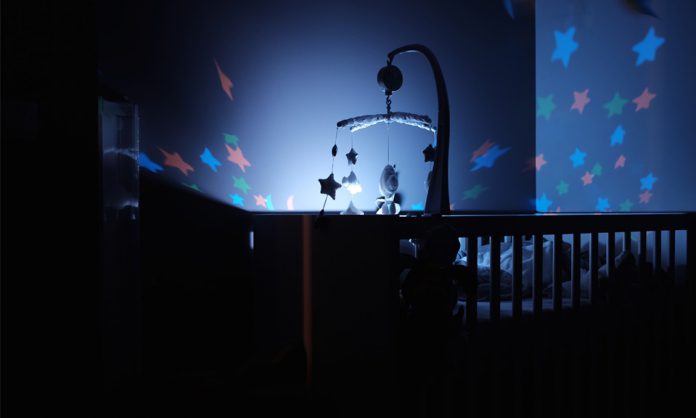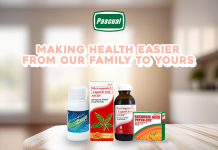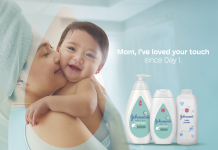If there is one thing that all babies share, it is that they grow up very quickly. Your helpless little angel is soon going to grow into a confident, no-holds-barred Indiana Jones, and what seemed like a safe haven is soon going to become an accident waiting to happen.
Often, placing something out of reach may not work. Small in size and chockfull of curiosity, your little Einstein will soon figure out how to attain that object of interest.
Even if you think you live in the safest of homes or if you have had children before, it will do a lot of good to look around and see what you can do to make your home safer.
Therefore, it is best to start baby-proofing early, preferably before your baby is born and definitely before he starts crawling.
Here are some ideas on how to get started.
Cot and chairs
A baby cot should be made of sturdy, stable material without cracked or broken slats. Ensure that there are no pointed or broken edges that could harm your child and that spaces between slats are about 45 to 65mm and less than 60mm wide at the mattress base.
The mattress should be firm, providing adequate support, and fit snugly into the cot frame, leaving less than a 4cm gap between mattress and cot.
Locks should be secured not shaky and the drop-side should always be up when your baby is in the cot.
Be careful that the cot is placed away from shelves, windows or electrical appliances as well as wires.
The same measure of care should be applied to chairs. As a rule of thumb when your baby is in a highchair, stroller or bouncer, keep the safety belt on.
A baby should never be left unattended while using these chairs as he could easily topple over, especially if he is able to kick against furniture or a wall.
For the same reason, bouncers or car seats holding a child should not be placed on tabletops.
From a baby’s eye view
Before baby starts crawling, it is a good idea to get down on your hands and knees and crawl about the house. This way you will be able to find those nooks and crannies or odds and ends that adult eyes easily miss and baby heads always bump into.
From this vantage point, you will discover sharp edges that could seriously injure your child, such as the coffee-table corner that your son always holds onto as he learns to cruise.
Protect your baby from sharp corners with corner protectors available at most departmental stores. Ensure that these protectors stick on fast as some may be easily pried open.
If you use glass sliding doors, prevent your child from running into them by placing stickers on strategic spots to emphasise their presence.
Look for doors that could pinch little fingers and invest in foam-based door stops.
If you use furniture like bookcases or TV carts on wheels, consider removing the wheels or using wheel locks.
Pick up anything that drops onto the floor immediately as something as small as a grape or button can become a choking hazard.
The kitchen
You may have noticed that kitchen stoves are always the right height for probing toddler hands so be sure to use rear hotplates or gas rings as much as possible and keep anything, like step stools, that a toddler can use to prop himself up with, out of sight.
Keep all cooking utensils and pot handles turned towards the back of the cooker so that they cannot be grabbed by little hands.
Some stores sell knob covers or stove guards but remember that these only minimise risk of injuries and do not guarantee against them.
Kitchens also tend to contain dangling electrical wires attached to heavy appliances so tie and tuck these out of reach and unplug all electrical items that are not in use.
Do not place hot drinks or meals within your child’s reach on kitchen or dining countertops. Apart from the liquid, hot glass or metal surfaces alone are enough to cause serious burns.
Decorative glassware should also be kept out of reach. Any broken glass or spilt drinks should be cleared up immediately.
Of concern too are sharp utensils or matches and cigarette lighters inside drawers, or chemicals and detergents inside cabinets.
Drawer and cabinet locks should be used wherever possible.
Never pour chemicals into drink bottles as your child may mistake them for his favourite drink.
Consider using appliance latches for large appliances such as the fridge, oven, dishwasher and washing machine as these are often roomy enough for a small child to climb into and shut the door on himself, posing the risk of suffocation.
The fridge is doubly dangerous because it is sometimes used to store medicines.
The bathroom
Your baby should never be left alone in the bathroom or tub even for a few seconds. Apart from being scalded by hot faucets, he could easily drown in as little as an inch of water.
Bathroom floors and tubs are also often slippery and can cause your child to slip and hit his head on a faucet or on the floor.
When starting a bath, it is a good idea to always run cold water before turning on hot water and to test the temperature with your elbow.
If shower doors are made of glass, never allow your toddler to hold the door when climbing into the bath area as the glass could easily break and cut his hands.
Ensure too that all soaps and toiletries are securely capped and kept out of reach.
The stairs
Stairs and stair carpeting are notorious for causing accidents so a stair gate can be very useful for both the top and bottom of each flight of stairs.
Repair worn carpeting or floorboards immediately.
Gaps between railings shouldn’t be too large or they may encourage stuck heads while footholds on banisters may persuade budding adventurers to attempt a dangerous downward slide!
Never allow your child to use a baby walker near the stairs. The American Academy of Paediatrics has called for a ban on baby walkers as it is well known for causing stair-related injuries.
Medicines and poisonous items
In the US, over 90% of poisoning incidences occur in the home with children under two years being especially vulnerable.
Curiosity can seriously harm your child and because he is smaller and his metabolic rate is faster, he is less capable of tolerating toxic materials.
For this reason, medicines must be kept out of sight and reach of children as just one curious taste test could prove to be fatal.
Alcohol and chemical substances are best kept inside higher cabinets too.
If you keep house plants, it is advisable to check if their leaves or seeds could be poisonous. You can find a list of poisonous outdoor and indoor plants at this website: http://www.oregon.gov/DHS/ph/safekids/poisonplants.shtml
Similarly, try to avoid using potting materials like small stones or pebbles that a baby could choke on.
Fire and electricity
Some child development experts feel that installing a smoke detector is advisable. Babies and toddlers are especially susceptible to smoke inhalation and fire-related deaths as they are unable to escape a fire on their own. If you do install a smoke detector, ensure that you check its battery at least once a year.
Electrical sockets are tempting to prodding hands and should be covered using a tamper-proof socket protector. The emphasis is on tamper-proof because not all socket protectors are made equal. It may be a good investment to try different brands. A study by The Biokinetics Research Laboratory of Philadelphia-based Temple University discovered that in most cases, children aged two to four years could easily remove plug-in type socket protectors!
Another potential hazard is an electrical wire with a break or cut in it. Parents are often unaware that saliva is an excellent conductor of electricity. When a baby mouths such a wire, the resulting injury could be extensive. Wires of any sort should therefore be checked, shortened or tied-up and kept well out of reach.
Remember…
Baby-proofing your home may seem like a very nitty-gritty and time-consuming task. Although it is true that children can devise the oddest ways to get themselves hurt, it is also true that a little bit of effort will at least ensure that serious injuries are averted.
You may be tempted to skip a few details, thinking that you can “teach” your child that some things are off-limits but kids being kids, it is highly likely they will forget or let their curiosity get the better of them. It is often safer and less frustrating to simply remove the offending object.
Also remember that no amount of baby-proofing can guarantee safety without adult supervision. Never leave your child unattended.
If time and cost permit, consider taking CPR and life-saving lessons to further ensure that your child’s safety is in well-prepared hands.
Babyproofing essentials – a useful shopping checklist!
- 4-corner protectors or table bumpers
- Bathroom and tub mats
- Cabinet and drawer locks
- Child-resistant containers
- Door stops
- Safety locks for fridge, oven etc
- Smoke detector
- Stair gates
- Stove guards
- Tamper-proof socket covers





